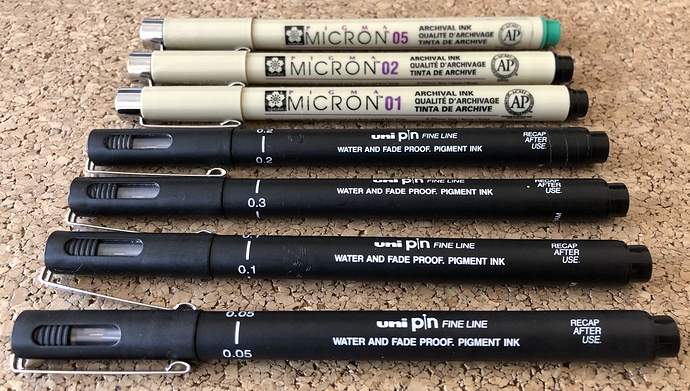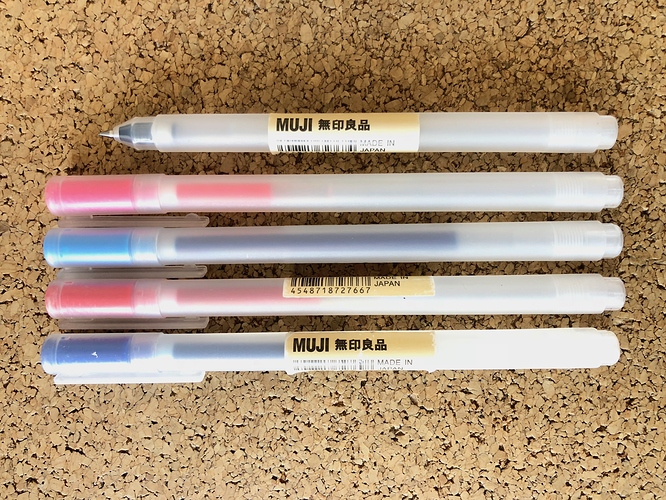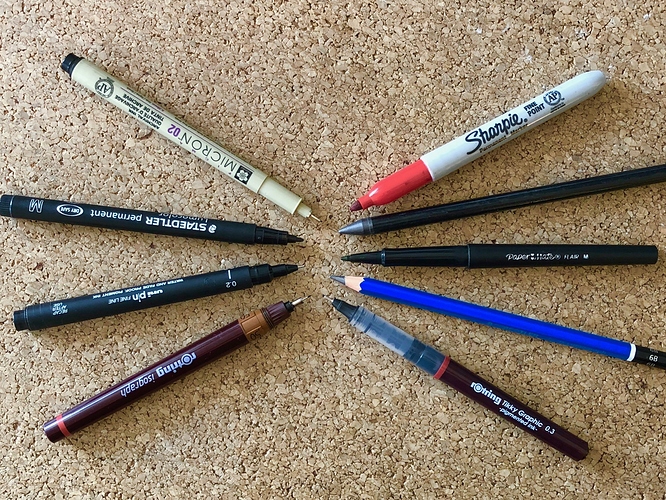We get asked this a lot, and the best advice we can give it to try out as many different types as you can and see what happens. Having said that, we’ve found pens that don’t require too much pressure, and that have a good flow of ink work well. A good starting point is a fine-liner, like a Uni-Pin Fine Line, or a Pigma Micron, maybe a 0.5mm. The nice thing about the Pigma is that it comes in 15 different colours, and it’s probably my favourite of the fine-liners.
Another good option is a Gel Roller. You can use a regular Bic type biro too (and you get quite a distinctive type of line with them) but the Gel ones require a bit less pressure so give a thicker line. We like the Muji ones; again they come in a range of colours and thicknesses but most of them work well. One advantage of Gel Rollers is they don’t dry out if you leave the cap off.
Don’t stop there though - we’ve seen lots of people using Sharpies, try a soft pencil, chalk or even a paintbrush! If we’ve left off your favourite just post a reply below.
Clockwise from top right:
- Sharpie: Nice fat line, just don’t leave the pen down for too long or you’ll get an inky blotch (unless of course you want to experiment with inky blotches…)
- Graphite: This one is a Faber Castell Graphite Pure 2900. Gives quite a fine line. It’s quite heavy so you get a little extra pressure.
- Paper Mate Flair: An old-school felt tip. Not quite as inky as a Sharpie.
- Plain old pencil: Try a 6B
- Rotring Tikky Graphic: Really high ink flow, but the step on the pen means it doesn’t quite sit vertically in the pen holder.
- Rotring Isograph: My favourite; requires no pressure at all, and loads of ink flow. Downside is that it’s a proper ink pen, so needs to be filled from a bottle. You’ll definitely get ink-stained fingers!
- Uni-Pin Fine-liner
- Staedtler Lumocolor: The German Sharpie. Lots of colour and size choice.
- Pigma Micron.


